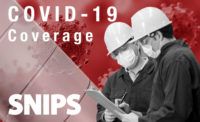It’s an election year. We’re bombarded with political messages, press briefings and debates. The world has had the opportunity to observe Americans bickering, pointing fingers and displaying behavior that, if they were children, would result in an extended timeout or a trip to the principal’s office.
For a body language expert, this is fodder for juicy articles. Politicians unintentionally provide meaty examples of Americans displaying horrible body language and making numerous verbal mistakes.
We’ve heard personal insults, shouts, and rants and observed displays of threatening gestures — fists clenched in the air as if challenging a higher power and index fingers directed in threatening motions.
If you think of the presidential race as a job interview for the highest, most powerful CEO position in a multi-trillion-dollar business, could any of us behave in this manner and find an employer who’d hire us? If we survived the interview process and continued this bad behavior, we’d soon hear the words, “You’re fired.”
There are business lessons to learn from the political circus.
Body Talk: The Feet.
Although you may not have thought about the importance of your feet at work, they send messages to those around you all day long. Feet move us out of danger as we flee from a perceived unsafe situation, like a falling warehouse crate.
Feet help us stand our ground when we want to stress a point in a meeting with colleagues. Standing on our own two feet conveys leadership. If you want the truth at work, take a glance at the feet — yours and the other person’s.
Feet Scenario #1
While discussing pricing with a manufacturer’s sales representative, we’re surprised to find that our feet point toward the exit doors. The feet were ready to walk out, yet our mind and voice had not made the departure decision. We silently telegraphed that we were no longer listening to the salesperson.
There are two choices: Listen to your feet and end the meeting, or re-engage listening skills while turning your feet toward the salesperson. Sometimes, asking open-ended questions will reignite your interest and help you keep your feet and mind re-engaged.
Feet Scenario #2
When happy and pleased with ourselves, we may walk with a “bounce in our step.” Other body language signals validate a happy mood. Pupils may dilate, the corners of our eyes crinkle, and our lips move upward into a smile. These behaviors tell coworkers we’re joyous. Our entire body language is congruent from head to toe. There’s no reason to doubt this person’s attitude.
If this good mood is coming from your boss, it might be a good time to discuss your promotion or give a progress report on a new project.
Body Talk: The Eyes
“The eyes are the window to the soul,” is a phrase attributed to Cicero. The sentence is a beautifully descriptive way of saying, “Eyes don’t lie.” Depending on the home in which you were raised, this window to your soul may have slammed shut by age two or three.
In the home in which my parents raised their six children, spankings were a disciplinary option. We all quickly mastered the “I’m innocent — it’s not me, mom” look.
Police interrogators attest to the fact that they’ve faced liars who mask guilt with strong, unflinching eye contact that fools rookie detectives.
When reading co-workers’ eyes, there are a few eye “tells” that are effective gauges of the individual’s state-of-mind. Fast blinking often indicates nervousness, inner stress, personal struggles and even low self-esteem. The average relaxed blink rate is between 15 and 20 blinks per minute. More frequent blinking is a tip-off of possible lying.
Frequent eye rubbing can show that someone does not believe what they’ve heard, said, or saw. Another eye signal is the rolling of the eyes. This can mean disrespect or contempt and is definitely not a positive signal in an important meeting or presentation. When observing eye rubbing or rolling, it’s best to stop and make inquiries as to what is going on in your subject’s mind.
Body Talk: The Hands
Stop where you are. Come closer. Keep your distance. I surrender. It’s nice to meet you. Each of these phrases relates to a specific hand gesture. The tricky part is interpreting them correctly in all cultures. These manual gestures are not universal. Care must be taken to accurately decipher their meanings to avoid misunderstanding.
In the U.S., when an individual extends their right hand toward you at waist level, they’re usually attempting to shake hands. Two hands grasping one another may be the only body contact experienced with another person before negotiation commences. There are numerous types of handshakes. Each carries their own meaning. They also set the stage for future business dealings.
The grasp can range from a 10-second bone-crusher to a two-second, limp-fingertip extension. The “power grip” sends a message that the individual is the authority. They’ll attempt to dominate the conversation. The flaccid, cold “jellyfish extension” sets a tone of weakness and a lack of self confidence. Another handshake is called “cupping.” In it, one of the individuals never allows palm to palm skin contact. It is as if they’re saying, I can’t commit to you.
Our primary goal should not be to intimidate another individual with the shake of a hand. Handshakes leave lasting memories. Start things out right by extending your hand to all you meet for the first time, no matter what their age or gender. The more modern “knuckle-bump” or high-five may be OK for a group of professionals meeting after work. If the gathering involves business, use the traditional firm handshake.
Summary
As we become more observant of body language, we more frequently see what others are thinking and build stronger business relationships.
© Article Copyright, FearLess Negotiator LLC, 2016. All rights reserved.











